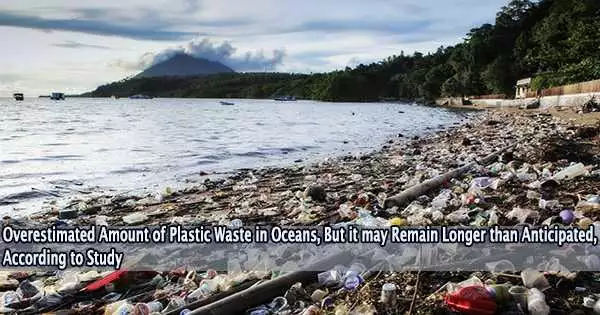According to a recent study released on Monday (August 7, 2023), there is less plastic in the water than scientists had previously believed. However, what is present could stay for a very long time.
According to the modeling study, over 95% of the plastic floating in the water is made up of particles larger than 25 millimeters (one inch).
Even while the majority of plastic debris in the ocean is quite small, less than five millimeters (0.2 inches) in diameter, the total amount of these microplastics is still rather little.
According to a study published in the journal Nature Geoscience, the abundance of larger floating pieces shows that the overall amount of plastic in the water is “much lower” than previously believed.
More than 25 million metric tons of plastic have been calculated to be present in the water, with 100,000 tons of it floating at the surface.
However according to the study, there is nearly three million tons more plastic on the ocean’s surface than previously thought.
That the plastic is floating around in large pieces could help clean-up efforts.
“Large, floating pieces on the surface are easier to clean up than microplastics,” the study’s co-author Erik van Sebille of Utrecht University in the Netherlands said in a statement.
Based on a massive amount of observational data and measurements collected from surface water, beaches, and the deep ocean between 1980 and 2020, the findings are based on a 3D model of the ocean.
‘Take action now’
The model also revealed that, as opposed to the four to twelve million tons previously believed, only approximately half that amount of new plastic enters the ocean each year as a result of fishing and shoreline activity.
More surface plastic and less fresh plastic, however, hints that the trash will likely stay in the water for a lot longer than originally thought.
“It means that it will take longer until the effects of measures to combat plastic waste will be visible,” the study’s lead Mikael Kaandorp said.
“If we don’t take action now, the effects will be felt for much longer,” he added.
And the amount of plastic pollution in the world’s oceans is still growing.
The authors of the study predict that absent further mitigation and cleanup, the remaining plastic trash might double in size within 20 years.
Plastic’s effects on the environment and people’s health have been increasingly controversial in recent years.
Plastic debris is estimated to kill more than a million seabirds and 100,000 marine mammals each year, according to the United Nations Environment Program.
The world is currently waiting for the highly anticipated first draft of an international UN convention to address plastic pollution, which is anticipated in November.
















